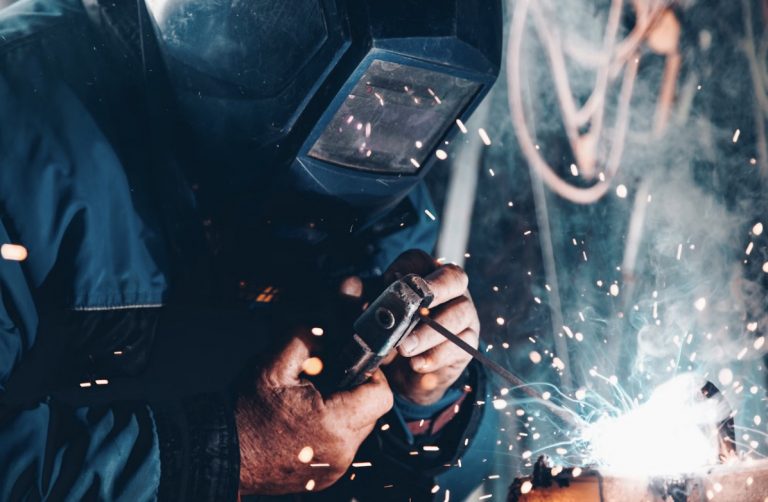Every component must meet exacting standards, and failure is not an option when lives are at stake thousands of feet in the air. This is where precision welding technologies come in – quietly but powerfully shaping the backbone of the industry. Whether you’re building aircraft, spacecraft, or defense systems, the margin for error is microscopic. Precision welding doesn’t just contribute to manufacturing success in aerospace – the linchpin makes it all possible. From advanced automation to materials compatibility and strict quality control, the evolution of welding technology directly influences the reliability, efficiency, and innovation in aerospace design and production.
Compatibility with Advanced Aerospace Materials
You’re dealing with exotic, high-strength, lightweight alloys designed for specific performance characteristics. Precision welding technologies are tailored to handle these specialized materials without compromising their properties. For materials that are notoriously difficult to join, such as titanium alloys and high-nickel superalloys, precision techniques like electron beam welding provide the depth, control, and cleanliness required to maintain structural integrity and avoid thermal distortion. The ability to control parameters such as pulse duration and energy density means you can fine-tune the process to suit different thermal conductivities and melting points. This is important when you’re integrating dissimilar metals or manufacturing hybrid structures.
Micro-Level Accuracy for Macro-Level Performance
Precision welding, even techniques like laser beam welding (LBW), allows for extremely narrow, deep welds that preserve the base material’s strength. These methods are important when dealing with high-performance alloys such as titanium, Inconel, and aluminum-lithium, which are commonly used in aerospace components. These methods’ precision secures minimal distortion, making them ideal for joining thin materials or working in high-stress regions such as turbine blades or fuel system components. The level of control you gain over heat input and penetration means you can achieve consistent welds across complex geometries – critical for flight safety and long-term durability.
Automation and Robotics Elevate Efficiency
When you use robotic welding systems paired with precision technologies, you gain speed, repeatability, and reduced human error. Robotic systems can handle intricate weld paths with millimeter-level accuracy, operating around the clock with minimal fatigue. You can program them for high-volume tasks or customized runs with the same reliability. Coupled with real-time monitoring systems, robotic precision welding makes sure that every weld meets the specification, and any deviation is corrected immediately. The result? Shorter production timelines, fewer defects, and a significant reduction in costly rework. In an industry where delays and recalls are financially devastating, automation becomes a strategic advantage you can’t afford to ignore.
Enhanced Design Freedom
The ability to create highly detailed, accurate joints opens up new possibilities in aerospace design. You’re no longer limited by the restrictions of traditional fasteners or bulkier welding processes. Designers can now create more aerodynamic, lightweight, and structurally efficient components because they know precision welding can deliver the necessary joins with minimal added weight. This is particularly important in spacecraft, satellites, and next-gen aircraft, where every gram matters. You also gain the ability to experiment with new geometries, integrated structures, and complex enclosures that improve overall system performance. Precision welding becomes a creative tool, not just a manufacturing step.
Data-Driven Quality Assurance
Precision welding technologies now integrate advanced sensors and software that offer real-time data on parameters like temperature, speed, pressure, and alignment. This enables you to detect anomalies as they happen, not after the fact. With closed-loop control systems, the welding equipment automatically adjusts to maintain optimal settings, reducing the risk of operator error. Post-weld inspection methods like non-destructive testing (NDT), including ultrasonic and radiographic inspection, are increased by the consistent quality delivered through precision welding. If you’re managing production at scale, this level of oversight allows you to streamline documentation and traceability, making audits and certifications smoother and faster.
Sustainability Through Waste Reduction
Environmental responsibility is increasingly important in aerospace, and precision welding technologies contribute meaningfully to sustainable manufacturing. By delivering accurate, controlled welds, you reduce material waste from rejected parts or excessive post-processing. Lasers produce less slag and require fewer consumables, decreasing the need for cleanup and disposal. By minimizing energy consumption through focused heat input and faster weld times, you’re lowering the carbon footprint of your operations. Many precision welding systems are also compatible with digital manufacturing techniques, including additive manufacturing, allowing you to adopt more sustainable, hybrid production workflows.

In aerospace manufacturing, precision is everything – and welding is no exception. Whether you’re securing structural integrity, working with advanced materials, or striving for greater production efficiency, precision welding technologies give you the edge. They allow you to meet the industry’s strict standards without compromising on performance, innovation, or sustainability. As demands in aerospace continue to grow, your ability to integrate cutting-edge welding processes will directly impact your competitive advantage. Precision welding isn’t just a technical upgrade – it’s a strategic necessity for success.


0 Comments